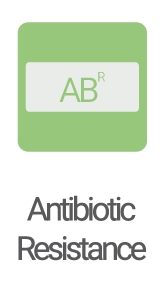pMC_0_1_25_NSII integration site upstream
Sequence and Features
- 10INCOMPATIBLE WITH RFC[10]Illegal PstI site found at 410
- 12INCOMPATIBLE WITH RFC[12]Illegal PstI site found at 410
- 21INCOMPATIBLE WITH RFC[21]Illegal BamHI site found at 1
- 23INCOMPATIBLE WITH RFC[23]Illegal PstI site found at 410
- 25INCOMPATIBLE WITH RFC[25]Illegal PstI site found at 410
- 1000COMPATIBLE WITH RFC[1000]
Description
Upstream region of the conventional Neutral integration Site NSII (GenBank accession number U44761) which is commonly used for gene manipulation in cyanobacteria. Neutral sites in cyanobacteria are sequences in the chromosome that do not change the phenotype of the cells after being engineered[1]. Genomic engineering is preferred over plasmid-based expression as it is more stable and predictable[2]. NSI can be used for genome integration of genes via homologous recombination in many strains of cyanobacteria such as PCC7942 and UTEX2793. The minimum length for homology arms is 250bp in PCC7002 and 300bp for PCC7942[2].
This part is contained in the Green Expansion, a range of parts from iGEM Marburg 2019that enables users of the Marburg Collection 2.0 to design MoClo compatible vectors for cyanobacteria as well as to engineer the genome of several cyanobacterial species.
The Green Expansion
The Green Expansion is an addition of parts to the Marburg Collection 2.0 (See: Design of the Marburg Collection) that features the world's first MoClo compatible shuttle vector for cyanobacteria. BBa_K3228069
The Green Expansion also offers all the parts needed for the genomic integration of one or multiple genes in cyanobacteria. This M.E.G.A. (Modularized Engineering of Genome Areas) kit convinces with a striking flexibility and a very intuitive workflow for the de novo assembly of your plasmid of choice. It encompasses five different neutral integration sites to choose from: three conventional sites frequently used in the cyanobacterial community (NSI to NSIII) as well as our own rationally designed artificial Neutral integration Site options a.N.S.o. 1 and 2 (See: Finding new artificial Neutral integration Site options).These sites show no transcriptional activity from neighboring regions according to RNA-seq data and are therefore completely orthogonal. Additionally we offer four different antibiotic markers to use (chloramphenicol, gentamicin, spectinomycin and kanamycin). With the Green Expansion up to 20 genes can be introduced into a cyanobacterial strain.
Thanks to the flexible design this expansion can also be used for the genomic modification of any chassis after the introduction of a new species specific LVL 0 integration sites to our Marburg Collection 2.0. As the workflow to build new homologies is a bit more intricate compared to the one pot on step assembly of our other parts due to the internal BsmBI cutting site, we described the workflow for that in our design section (See: Design of neutral integration sites).
The Green Expansion proves a valuable addition to our Marburg Collection 2.0 and to the iGEM Registry of Standard Biological Parts. It services users of our chassis and other cyanobacterial strains with a useful tool for genomic modifications but it also contributes a shell that can be used to modify any other model organism as well.
Compability
These parts are compatible with the RCF [1000] standard and can be used in any part collection that uses the PhytoBrick standard of overhangs. For more information we recommend to head over to Design of the Marburg Collection iGEM Marburg 2018.
Parts of the Green Expansion





